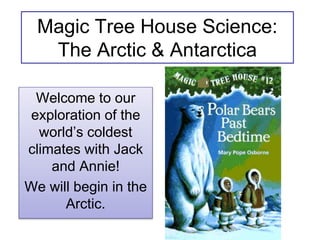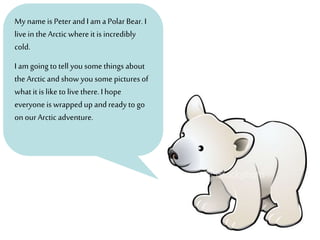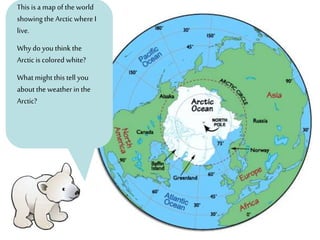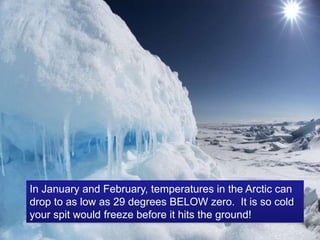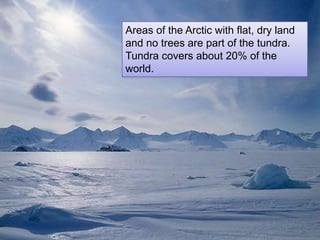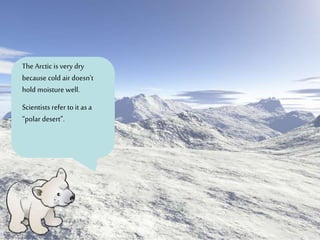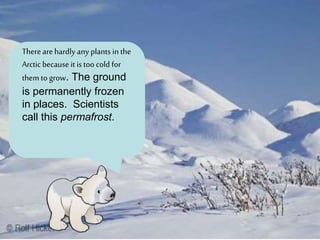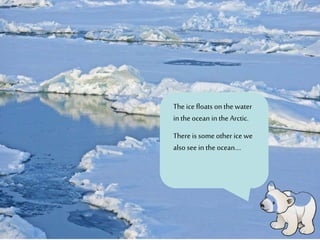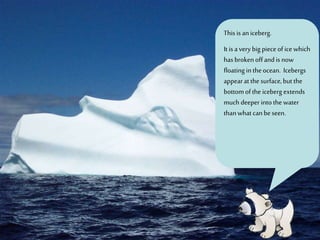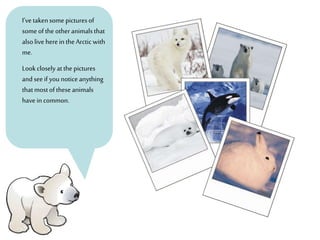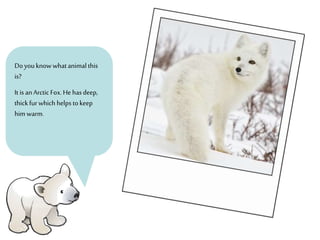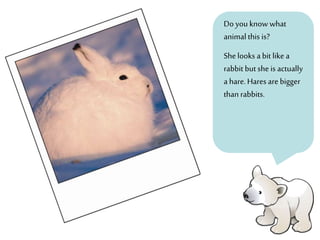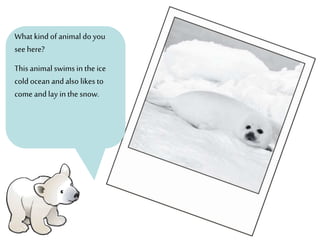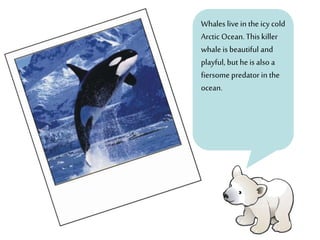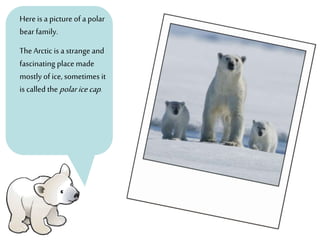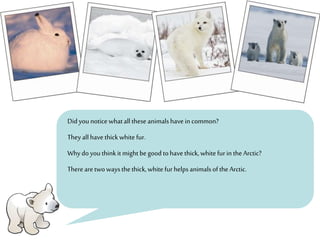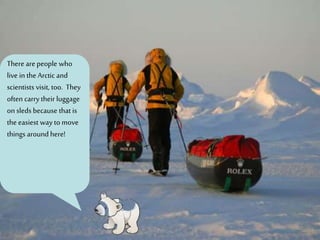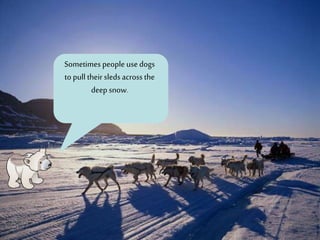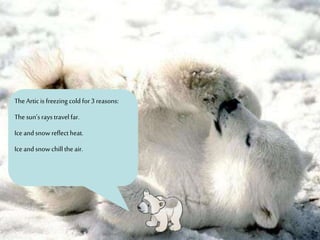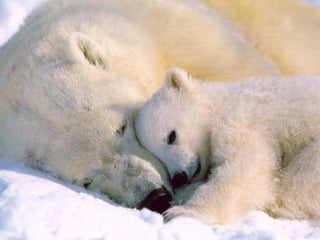Magic Tree House Polar Bears Past Bedtime: Overview of the Arctic
- 1. Magic Tree House Science: The Arctic & Antarctica Welcome to our exploration of the worldâs coldest climates with Jack and Annie! We will begin in the Arctic.
- 2. My name is Peter and I am a Polar Bear.I live in the Arctic where it is incredibly cold. I am going to tell you some things about the Arctic and show you some pictures of what it is like to livethere. I hope everyone is wrapped up and ready to go on ourArctic adventure.
- 3. This is a map of the world showing the Arctic where I live. Why do you think the Arctic is colored white? What might this tell you about the weather in the Arctic?
- 4. Here are some pictures of the Arctic to help you imagine what it would feel like to live here.
- 5. In January and February, temperatures in the Arctic can drop to as low as 29 degrees BELOW zero. It is so cold your spit would freeze before it hits the ground!
- 6. Areas of the Arctic with flat, dry land and no trees are part of the tundra. Tundra covers about 20% of the world.
- 7. The Arctic is very dry because cold air doesnât hold moisture well. Scientists refer to it as a âpolar desertâ.
- 8. Therearehardly any plants in the Arctic because it is too cold for them to grow. The ground is permanently frozen in places. Scientists call this permafrost.
- 9. The ice floats on the water in the ocean in the Arctic. There is some other ice we also see in the ocean....
- 10. This isaniceberg. It isavery big pieceof icewhich hasbrokenoffandis now floatingin theocean. Icebergs appearatthe surface,butthe bottomofthe iceberg extends much deeper intothe water thanwhatcanbeseen.
- 11. Iâve takensome picturesof someofthe otheranimalsthat alsolive herein theArctic with me. Lookclosely atthe pictures andseeif younoticeanything thatmostoftheseanimals havein common.
- 12. Doyouknowwhatanimalthis is? It is anArctic Fox.He hasdeep, thickfurwhich helps tokeep him warm.
- 13. Do you knowwhat animal this is? Shelooks a bit like a rabbit butshe is actually a hare. Hares are bigger than rabbits.
- 14. What kind of animal do you seehere? This animal swims in the ice cold ocean andalso likes to come andlay in the snow.
- 15. Whales live in the icy cold Arctic Ocean.This killer whale is beautiful and playful, but heis also a fiersome predator in the ocean.
- 16. Here is a picture of a polar bearfamily. TheArctic is a strange and fascinating place made mostly of ice, sometimes it is called the polaricecap.
- 17. Didyounoticewhatall theseanimalshavein common? Theyall havethickwhite fur. Whydoyouthinkit might begood tohavethick,whitefurin theArctic? Therearetwowaysthethick,white furhelps animalsofthe Arctic.
- 18. There are people who live in the Arctic and scientists visit, too. They often carry their luggage on sleds because that is the easiest way to move things around here!
- 19. Sometimes people usedogs to pull their sleds across the deep snow.
- 20. The Articis freezing cold for3 reasons: The sunâsraystravel far. Ice andsnowreflect heat. Ice andsnowchill theair.

